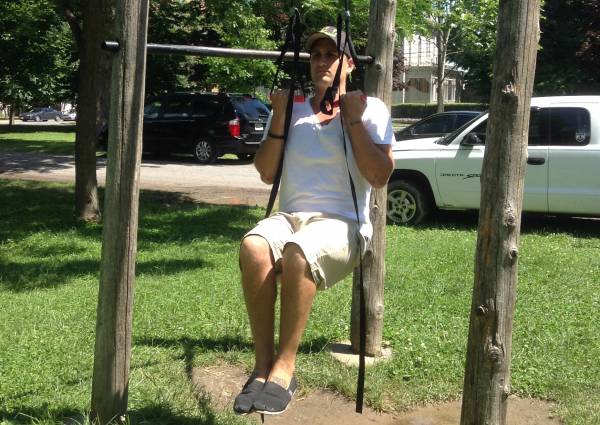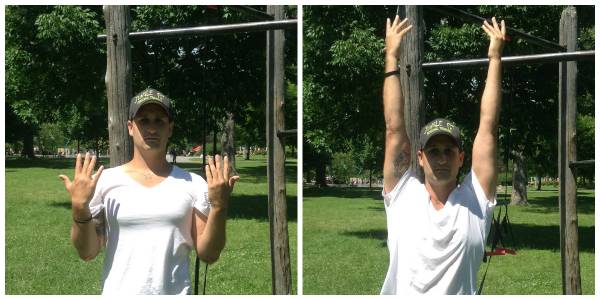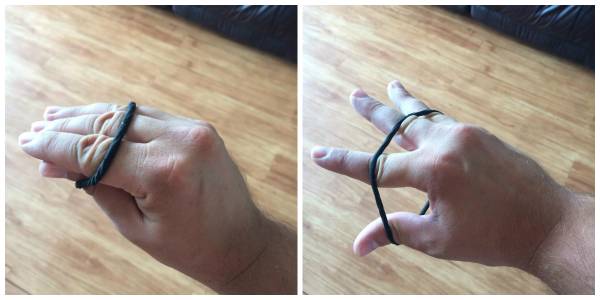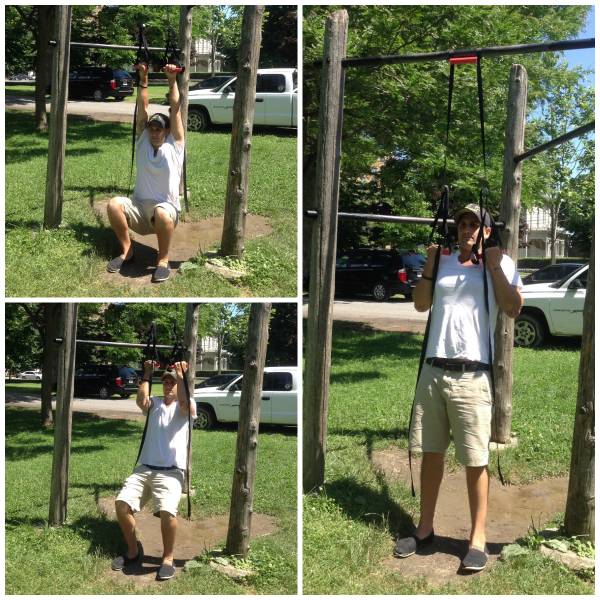Experiencing pain during any exercise is a bummer. After all, your training should be making you better, not making you feel worse. If you’re experiencing pain during any exercise it’s a sign something is wrong, either with the technique or with your body.
An exercise that gives a lot of people these sorts of troubles is the chin up. One of the most common complaints during chin up is elbow pain or discomfort. When your elbow is bothering you it can affect simple every day activities. Little things like opening up jars, walking the dog, or carrying your groceries can become real tasks. Not to mention the way this pain can affect the rest of your training. Just about every single upper-body exercise will be negatively affected by an injured elbow.
Elbow pain can quickly derail your progress with chin ups and other upper body exercises.
Luckily there are some simple adjustments you can make to stop your chin-up related elbow pain in its tracks! In this article, I’m going to outline five easy fixes to help you, and your elbow, fall in love with chin ups all over again.
1. Neutral Grip
Switching to a neutral grip can be a simple solution when it comes to elbow pain during chin ups. It’s not uncommon for many trainees to find that the traditional supinated grip (palms facing toward your body) places excess strain on the elbow. The same can be said for the pronated (palms facing away from the body) grip during traditional pull ups.
Chin-Up Tip: Using a neutral grip (palms facing each other) can help alleviate the stress placed on the elbow joint by reducing the amount of torque on the elbow.
2. Use Rings or a Suspension Trainer
When most people think of chin ups, they assume they need a pull up bar. However, performing your chin ups on a fixed bar can also lend a hand in elbow pain. We’re all built differently, with different bone lengths and slightly different fittings in our joints. Forcing your body to stay in one position by holding onto a fixed bar might not bother one trainee, yet for another, it might wreak havoc on his or her joints. A simple fix is to perform your chin ups with gymnastics rings or a suspension trainer.
Chin-Up Tip: Free-moving handles allow your shoulders and elbows to move in a much more natural way for your individual body.

Forcing your body to stay in one position by holding onto a fixed bar can wreak havoc on your joints.
3. Change Your Hand Spacing
If your hands are spaced too wide or too close, you may experience more stress on the elbow during chin ups. The rule of thumb I use with just about every one of my clients is to keep your palms just in front of your shoulders, with the thumbs just outside shoulder width, and keep that width throughout the chin up.
Chin-Up Tip: The right hand width will reduce the amount of stress on your elbows and shoulders during your chin ups.

Using proper hand width will go a long way in relieving pressure on the elbows.
4. Work on Your Extensors
Your training often involves a lot of grip work, wether you know it or not. Think about the amount of time you spend hanging from bars, picking up heavy weights, or swinging kettlebells. Your grip is being tested and trained during just about everything you’re doing in the gym. If you’re adding specific grip work on top of that, then you’re really upping the probability of elbow pain.
When the flexors in the forearms and hands are over worked without paying attention to the extensors, you create a muscle imbalance that can lead to pain. One simple, inexpensive, and portable method for balancing out these muscles is to use an elastic band to train the extensors. Seriously, a basic elastic band that can be found in every office just might be the savior of your elbows.
- Wrap the elastic band around the second knuckle of your fingers.
- Spread them outward against the resistance.
- Higher reps work best, but at first you might be surprised how few reps you can actually repeat.
Chin-Up Tip: Training with band exercises will build your endurance and help balance out those flexors and extensors.

Use this simple exercise to strengthen your extensor muscles.
5. Try an Easier Progression
There’s nothing that’s going to injure you faster than doing an exercise that’s too advanced or using more weight than you can handle. Using a bodyweight progression that’s too advanced is a great way to destroy your joints, and the chin up is no exception.
A lot of people get hung up on trying to achieve their goal. In this case, the goal is most likely a chin up or a set of chin ups. But when you get hung up on the outcome, then you’re more likely to skip steps and take risks during your training. When you do that, you’re allowing your ego to get the better of you.
Chin-Up Tip: If you’re using sloppy form, forcing reps, or feeling like the exercise is too difficult, then drop your ego and use an easier progression.
A great progression to start with is the feet-assisted chin up:
- Use a bar at upper chest height or lower your suspension trainer to upper chest height.
- Grip the bar or handles with palms facing toward you and your hands shoulder width apart.
- Squat down with your feet ahead of your body, weight on your heels, and arms extended fully overhead.
- Pull up with very little assistance from the legs, keep the chest out and chin up.
- Once you’ve reached the top, pause for a second before slowly lowering back to the starting position
Note: The pressure and weight should always be carried by the upper body. The legs should only be used lightly as assistance. This is a pulling exercise, not a squatting exercise.

The feet-assisted chin up is a great way to progress your chin ups.
Take It Slow
Depending on your specific needs and body type, you may only need one of the fixes above to cure your elbow pain – or you might need to combine a few of them. Everyone is different. So, take it slow, experiment with the suggestions above, and find yourself a winning combination towards pain free chin ups. I know you can do it!
More Like This:
- Pull Up vs. Chin Up: A Comparison and Analysis
- Mastering the Chin Up: 7 Variations to Beat Gym Boredom
- Chin Up! 5 Pieces to Progress Your Pull Up
- New on Breaking Muscle Today
Photo 1 courtesy of CrossFit Impulse.
Photos 2-4 courtesy of Timothy Bell.






